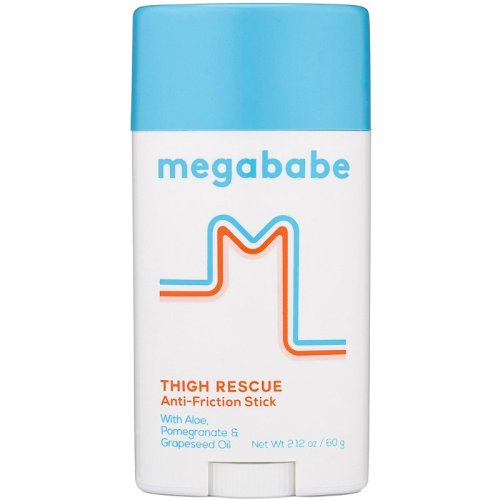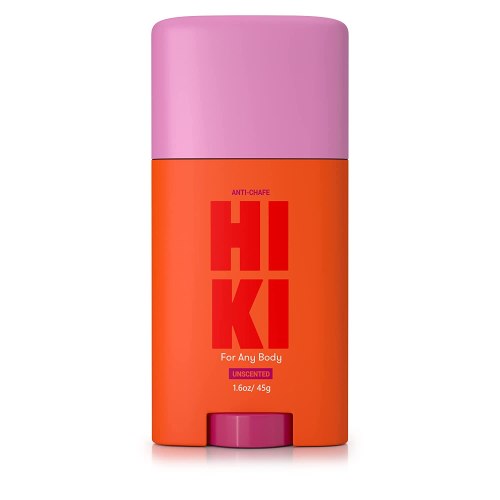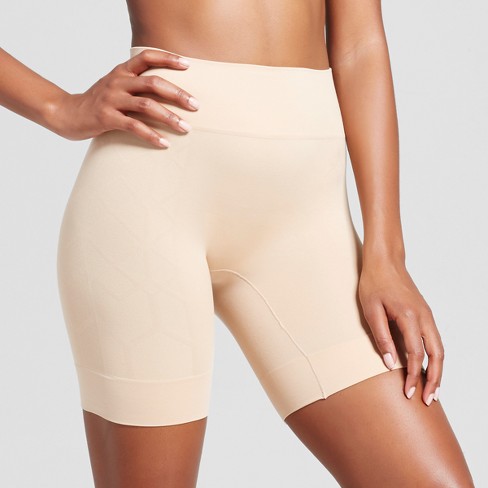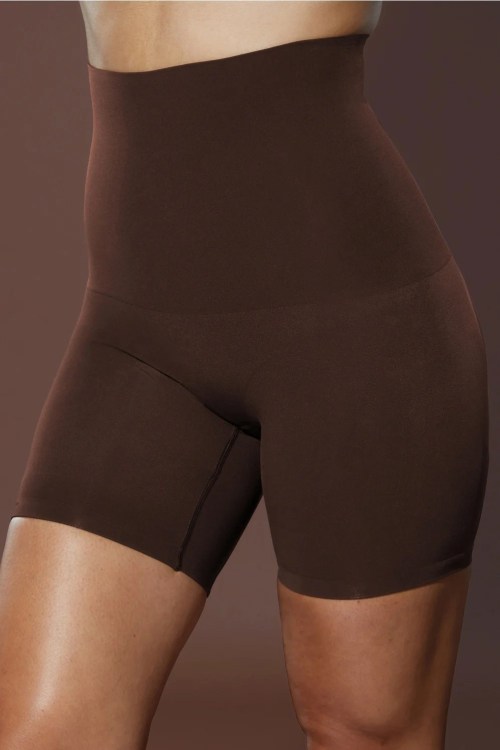Chafing Can Happen on *All* Bodies—Here’s Your Complete Guide on How To Deal
Skin chafing can be so frustrating, embarrassing, and painful. The thing is: everyone chafes. here's what to do to prevent it.

I remember the first time I experienced chafing. I was away at a swim meet, and my teammates and I were doing what all unsupervised teens do in a hotel: running around. I was chasing my crush up the emergency stairwell in a stretchy floral pencil skirt, and (I can sense that you know where this is going) after sprinting up so many stairs, I realized I was in a lot of pain and… bleeding? I had never experienced chafing before, and not only did it really hurt, but it was also embarrassing.
Experts in This Article
board-certified dermatologist at Medical Dermatology and Cosmetic Surgery in New York
The next day, a friend’s mom slipped me a tube of diaper rash ointment when she noticed me periodically checking my chafe rash (which wasn’t exactly easy to hide in a one-piece bathing suit). The cream relieved the sting, but somehow made the experience even more uncomfortable. Even though I didn’t care about having the “thigh gap” that was popular among girls my age, when I later heard chafing rashes referred to as “chub rub,” it made me feel sad and ashamed.
But here’s the thing: Thigh gaps are a toxic myth, and so is the phrase “chub rub”—chafing is an indiscriminate skin rash that just needs friction and moisture to appear. In other words, if you have skin and sweat, you have the ability to chafe, regardless of your size. Fat folks can chafe in areas that thin folks chafe, and vice versa. Chafing is also not solely something that happens between thighs. Nonbinary people who wear chest binders can chafe, marathon runners can have nipple chafing between their shirt and chest, and chafing can happen in different areas based on your posture, chest size, and the size and shape of your genitalia. What’s more, it depends on what you wear, the weather, how much you sweat, and even your skin type.
As we head toward warmer temps, the combination of sweat and exposed skin create a perfect storm for chafing to occur on any body—but that doesn’t mean it’s something you simply have to suck up and deal with. For a while, I would just try to ignore my chafing and power through the discomfort until I ended up waddling my way home and wincing with every step. But as I now know, chafing is nothing to be ashamed of, and ignoring it will definitely make things worse.
To get ready for the part of the year that’s full of swimsuits, sweat, and scantily clad-ness, we chatted with pros to give you a full lesson in “Chafing 101” so that you can move through summer friction—and pain—free.
What is chafing?
According to Marisa Garshick, MD, FAAD, board-certified dermatologist at MDCS Dermatology in NYC, chafing can occur anywhere there’s friction. It comes from skin rubbing up on skin or fabric, and usually happens in moist areas like between the thighs, near the genitals, under the arms, under the breasts, or along the waistband of your clothes. The chronic rubbing disrupts the skin barrier and may trigger inflammation, which can lead to redness and discomfort. If you don’t deal with your chafing, it can even cause the skin to come off, creating a stinging or burning sensation when the friction continues.
Because chafing is a rash, it creates an open wound on your skin, which means it shouldn’t be ignored. Pushing through the chafe isn’t going to make it go away, and can actually cause a lot of pain, so consider preventative measures your anti-chafe best friend.
How to prevent chafing
As I got older, I realized that there were a number of ways to help me avoid chafing—and none of them involve sacrificing my wardrobe or skipping out on activities where my skin may rub together.
Thanks to brands like Megababe, Body Glide, and Hiki, there are now plenty of options on the market designed to specifically help you avoid skin-to-skin friction. A single swipe of their anti-chafe gels adds a slick, dry barrier between the skin that is touching to prevent the sticky, moist rubbing that causes painful chafing. As a masculine-presenting person, I now have to prevent chafing around the area of my chest binder instead of between my thighs when wearing a dress, and Megababe’s Thigh Rescue ($14) has been a game-changer.

Megababe Thigh Rescue — $14.00

Body Glide Original Anti-Chafe Balm — $10.00

HIKI Anti Chafing Stick Balm for ALL Bodies — $10.00
If you’re looking to prevent chafing under a skirt or dress, wearing shorts can make a world of difference. When I first started doing this a few years ago, I remember feeling insecure that I needed an extra layer of fabric while everyone else was effortlessly moving about in their flowy summer bottoms. But the reality is that no one will ever know that you’ve got shapewear or some bike shorts on under your outfit, and chances are, more people are doing it than you realize. When choosing a pair of undershorts, look for a stretchy, non-synthetic material that has some ability to absorb sweat, which will help decrease the moisture that causes chafing.

Jockey Generation™ Women's Slipshort — $12.00

Nearly Naked Shaping Ultra High Waist Short — $50.00
ThirdLove Just Launched Bras That Help Balance Your Body Temperature—Here’s Why That’s a Game-Changer for Women in All Life Stages

These Are the Only Types of Underwear You Should Be Wearing, According to Gynecologists

These Are the Summer Essentials You Should Bring With You Every Time You Leave the House, According to a Derm and an RD

What to do after chafing has occurred
Chafing is a type of open wound—especially if there’s bleeding— so you’ll want to treat it as such. Start by gently wiping it with a damp cloth or first-aid solution (just stay away from using a sterilizing alcohol swab if you can, because it will make things extra painful). Then, apply diaper rash cream (because diaper rash is a form of chafing) or an antibacterial topical ointment. It’s possible for a chafing rash to get infected without proper cleaning and care, so check on the area in the coming days after it appears. While you’re healing, be sure to keep the skin dry and avoid friction as much as possible.
At the end of the day, chafing is exceptionally human, preventable, and treatable. Getting out there and having fun this summer is important, and a little bit of friction doesn’t have to stop you.
You’ve likely heard the phrase, “Every body is a beach body,” right? Still, navigating the summer can be challenging. This week, Well+Good is publishing All Bodies Are Beach Bodies—A Realistic Guide to Preparing for Summer to help you hold on to your confidence, embrace joyful movement, manage sweat, make meaningful memories, and find major swimsuit inspiration all summer long.
Sign up for the Well+Good SHOP Newsletter
Get exclusive deals on wellness, beauty, fitness, and food products that have been hand-picked by our editors.
Got it, you've been added to our email list.







